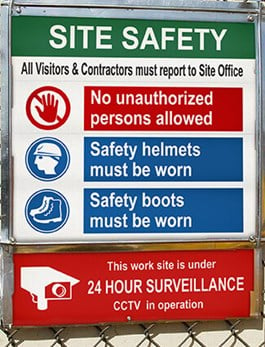What is Next for OSHA, Compliance in 2020?
03
February,
2023
2 MINUTE READ
It was a busy 2019 for the Occupational Safety and Health Administration. The federal agency reports an increase in the number of inspections (33,401) and compliance assistance services. Among its focuses were addressing violations of fall protection, trenching, and chemical exposure. The agency also served a record amount of training program attendees. The agenda is just as ambitious in mid-2020 as workplaces adjust to the coronavirus pandemic or COVID-19.
Complaints Increase
"OSHA's efforts ? rule-making, enforcement, compliance assistance, and training ? are tools to accomplish our mission of safety and health for every worker," said Principal Deputy Assistant Secretary of Labor for Occupational Safety and Health Loren Sweatt. Since the start of the pandemic, OSHA has responded to almost double the number of complaints, compliance assistance requests, and questions than the previous time last year, she said. "OSHA's efforts to address COVID-19 have been its top priority since February."
Why is interest increasing in occupational health and safety? It is the law. It also protects a workplace's reputation, efficiency, and bottom line, said Ahmed Al Bayati, an assistant professor in Construction Management at Western Carolina University. He teaches an OSHA Regulations class to get safety seekers up to speed. Al Bayati has more than 10 years of experience in construction, serving in jobs from safety coordinator to site engineer.
Al Bayati is a certified professional engineer, construction safety and health technician, and an OSHA authorized trainer. "I got into construction because of my family ? my father was in construction," he said. Now, he is dedicated to educating others on OSHA regulations and safety best practices. "Some regulations are more difficult to apply," he said.
His current research focuses on construction safety and construction project management. Al Bayati said the future of OSHA compliance, as well as general health and safety, lie with these core points:
- New technology: Working better is all about working smarter to improve hazardous tasks, such as confined space awareness and crane safety. "There are safety technologies that are very helpful," he said. This includes smart machinery and PPE.
- Increasing knowledge: Continuous OSHA safety and best practice training, routine safety meetings, and improving communication. For example, worksites can use signs and labels to help follow OSHA standards for scaffolding and ladder safety. "Signs and labels are important to hold the attention of workers," he said.
Important Communication

According to data from the Bureau of Labor and Statistics and OSHA, efforts and enforcement are helping stop more than 7,000 fall hazards in construction. OSHA says its enforcement activities reflect the continuous focus on worker safety.
"While there are requirements for general signs and labels by OSHA, there are some messages that are not required that are still important to have anyway for workers and whoever else will enter the job site," Al Bayati said. "There are many contractor responsibilities. Communication is important when there are many professionals on the site. Educate on struck-bys and electrocution, new technologies - and training materials must be in languages that workers can understand."
The future of OSHA safety and compliance will most likely continue to follow a holistic approach. Worksites can apply engineering controls, follow safe working practices, assess and train on PPE, conduct daily inspections and preventative maintenance, and ensure the employee injury and illness program is up to date and efficient. Another important part of OSHA compliant construction safety is having effective visual communication such as construction signs, labels, and other markings. Employers can use or create safety signs and labels to communicate all job site hazards and remind workers of important rules and steps, such as wearing PPE. Continuous communication and routine safety meetings and training will protect workers for all potential hazards.
Learn key safety regulations and safety programs to follow in our free Construction Safety Manager's Guide.
RELATED RESOURCES

5 Tips for Construction Safety During COVID-19
Construction companies and workers are getting back to their sites with new safety precautions to help ...
Read
Technology in Construction: From the Ground Up
The increased aligning of construction technology and management are improving projects all around - ...
Read
Improve Falling Objects, Struck-Bys in Construction
Falling objects and struck-bys are some of the most common job hazards that lead to injury or death in ...
Read.png)


